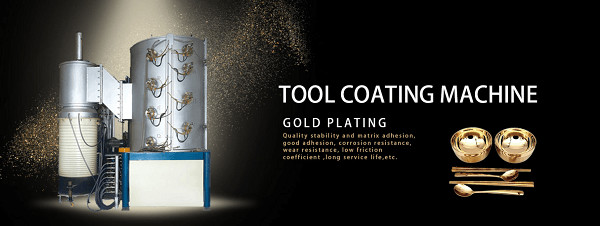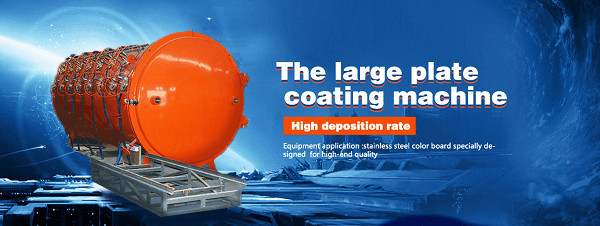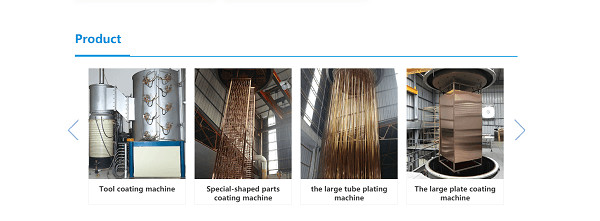Effect of Pulse Bias Duty Cycle on the Structure and Mechanical Properties of Composite Ion Plating (Cr, Al)N Film
The composite ion plating method that combines arc ion plating and magnetron sputtering ion plating is adopted. High-purity Cr is used as the arc target and high-purity Al is used as the sputtering target. Nitrogen and argon are introduced at high speed. (Cr, Al)N films are deposited on steel and silicon wafers. Through analysis and measurement methods such as step meter, scanning electron microscope, X-ray diffractometer, Vickers hardness tester, etc., the changes in the structure and mechanical properties of (Cr, Al)N films under different pulse bias duty cycles were studied. Studies have shown that the duty cycle has an effect on the structure and mechanical properties of the film. When the duty cycle is 40%, the deposition rate of the film is the largest, which is 12.8 nm/min. The Vickers test is held with a load of 25 g for 10 s. The hardness of 1725 Hv is also the maximum value obtained in the experiment.
(Cr, Al)N film is an excellent substitute for traditional CrN film, which covers the corrosion resistance, excellent wear resistance and thermal stability of CrN film, and has a wide range of applications in corrosion and protection of workpieces . CrN film can be used to modify the surface of knife molds. It has excellent performance in resisting high temperature oxidation during cutting or stamping, but its application is limited due to its low hardness. So people began to pay attention to the development of new hard coatings based on CrN aimed at improving its hardness. Studies have shown that (Cr, Al)N film is an excellent substitute for traditional CrN film. The main reason is that the structure of CrN is changed from the face-centered cubic structure of CrN to fiber due to the incorporation of Al. Zinc mine structure. Since both Al and Cr have good oxidation resistance, the oxidation temperature of (Cr, Al)N film can reach 900℃, and the solid solution strengthening effect can greatly increase the hardness of (Cr, Al)N film. Excellent thermal stability and high hardness make it widely and importantly used in industrial production. It has a very positive meaning for increasing the wear resistance and corrosion resistance of the tool mold, extending the service life of the tool, improving the cutting technology of the tool, improving the production efficiency, and reducing the production cost.
In fact, there have been some reports on the research of (Cr, Al)N films at home and abroad, and the research mainly focuses on the influence of preparation methods and process parameters on the structure and properties of the film. The main methods of preparing (Cr, Al)N films are DC bias arc ion plating and pulse bias sputtering ion plating. Due to the poor electrical conductivity of (Cr, Al)N films, when DC-biased arc ion plating is used, the ions evaporated from the arc will continue to bombard the substrate and the deposited film under the action of the negative-biased electric field, which will lead to deposition. As the temperature rises, the residual stress increases, and occasionally micro-arc discharge occurs on the surface of the film during the deposition process, which causes the coating surface to be rough or even fall off. Sputtering ion plating is another method of vacuum coating. Its characteristics are stable process, uniform coating structure, high surface quality, low internal stress, but low ionization rate, weak film/base bonding force, vacuum technology network (http: //www.chvacuum.com/) believes that if this method is combined with arc ion plating to form a composite ion plating, it is expected to make full use of their respective advantages to make up for the shortcomings of the other method, thereby obtaining a film with higher surface quality. Among the process parameters, the more important influences on the film structure and performance include substrate bias, deposition pressure, temperature, etc. Among them, bias is one of the most important factors. Most researchers focus on the size of the bias on the structure and performance of the film. However, there are relatively few studies on the influence of pulse bias duty cycle on film quality. The duty cycle generally refers to the ratio of the peak time of applying a pulse bias voltage to the time of a pulse period in a pulse period. In this paper, composite ion plating is used to prepare (Cr, Al)N films by applying DC superimposed pulse bias voltage on the substrate, focusing on the effect of duty cycle on the microstructure and mechanical properties of the film.
1. Experimental method
vacuum coating machine,pvd coating machine,pvd vacuum machine,vacuum ion coating machine,multi-arc ion coating machine
The coating equipment used in this experiment is a domestic SA-6T composite ion coating machine. The vacuum system of the coating machine is mainly composed of a mechanical pump, an oil diffusion pump, and a vacuum chamber. The structure is shown as follows.
Effect of Pulse Bias Duty Cycle on the Structure and Mechanical Properties of Composite Ion Plating (Cr, Al)N Film
The substrate used is high-speed steel and monocrystalline silicon wafers. The size of the high-speed steel substrate is 15 mm×10 mm×10 mm, which is used to test the mechanical properties of (Cr,Al)N coatings, and the film deposited on the silicon substrate is used to test and analyze the surface morphology and microstructure. The high-speed steel substrate needs to be polished to the mirror surface before cleaning. Before deposition, the substrate needs to be ultrasonically cleaned in a beaker containing acetone for 30 minutes, and then ultrasonically cleaned in a beaker containing absolute ethanol for 15 minutes. After drying, it is fixed on the sample holder in the vacuum chamber.
In the experiment, Cr and Al with a purity of 99.99% were used as arc targets and sputtering targets, respectively, and thin film samples were deposited under nitrogen and argon atmospheres with a purity of not less than 99.99%. Before coating, the background vacuum is lower than 3× 10-3 Pa. Adjust the DC bias voltage connected to the substrate to 200 V, and the pulse bias voltage to 600 V to perform glow cleaning on the substrate for 15 minutes. Then maintain the DC bias voltage of 100 V, pulse bias voltage of 300 V, and frequency of 40 kHz, and deposit thin film samples under different duty cycle conditions. The detailed coating process parameters are shown in Table 1. Before plating each (Cr, Al)N film, a pure metal Cr transition layer is deposited for 3 minutes to improve the bonding force between the substrate and the coating.
vacuum coating machine,pvd coating machine,pvd vacuum machine,vacuum ion coating machine,multi-arc ion coating machine
Table 1 Coating process parameters
Effect of Pulse Bias Duty Cycle on the Structure and Mechanical Properties of Composite Ion Plating (Cr, Al)N Film
Use AMB10SXP-2 step tester, X-ray diffractometer (D/Max-2400 model), FEI NovaNano 230 scanning electron microscope (SEM), Vickers hardness tester, MS-T3000 friction and wear tester to measure the thickness and material of the sample. The phase structure, surface morphology and hardness performance were analyzed and characterized.
3. Conclusion
vacuum coating machine,pvd coating machine,pvd vacuum machine,vacuum ion coating machine,multi-arc ion coating machine
1. With the increase of the duty cycle of the pulse bias, the deposition rate of (Cr, Al)N film first increases and then decreases. When the duty cycle is 40%, the deposition rate reaches the maximum.
2. The surface of the (Cr, Al)N film composite prepared by arc ion plating and magnetron sputtering technology is relatively flat, with a few large particles existing but smaller in size, and surface defects and particles appear to decrease with the increase of the duty cycle the trend of.
3. The preferred orientation of the (Cr, Al)N film obtained by the composite ion plating is (200), and the relative intensity of the diffraction peak corresponding to the crystal plane gradually increases with the increase of the duty cycle, indicating that the duty cycle affects the microstructure of the crystal The structure has a more obvious impact.
4. With the increase of the pulse bias duty cycle, the microhardness of the (Cr, Al)N film first increases and then decreases. When the duty cycle is 40%, the maximum value is 1725 Hv.
vacuum coating machine,pvd coating machine,pvd vacuum machine,vacuum ion coating machine,multi-arc ion coating machine
Founded in 2015,Zunhua Baorui Titanium Equipment Co.,Ltd. is a manufacturer specializing in pvd vacuum ion coating equipment. The company’s products mainly include large plate coating machine, large tube collating machine, tool coating machine and LOW-E glass production line. Mr.Wang baijiang ,general manager of the company ,has been engaged in vacuum coating industry for more than 30 years. He continuously improve production technology, improve product performance and devote himself to provide customers with better product experience and higher production efficiency.





